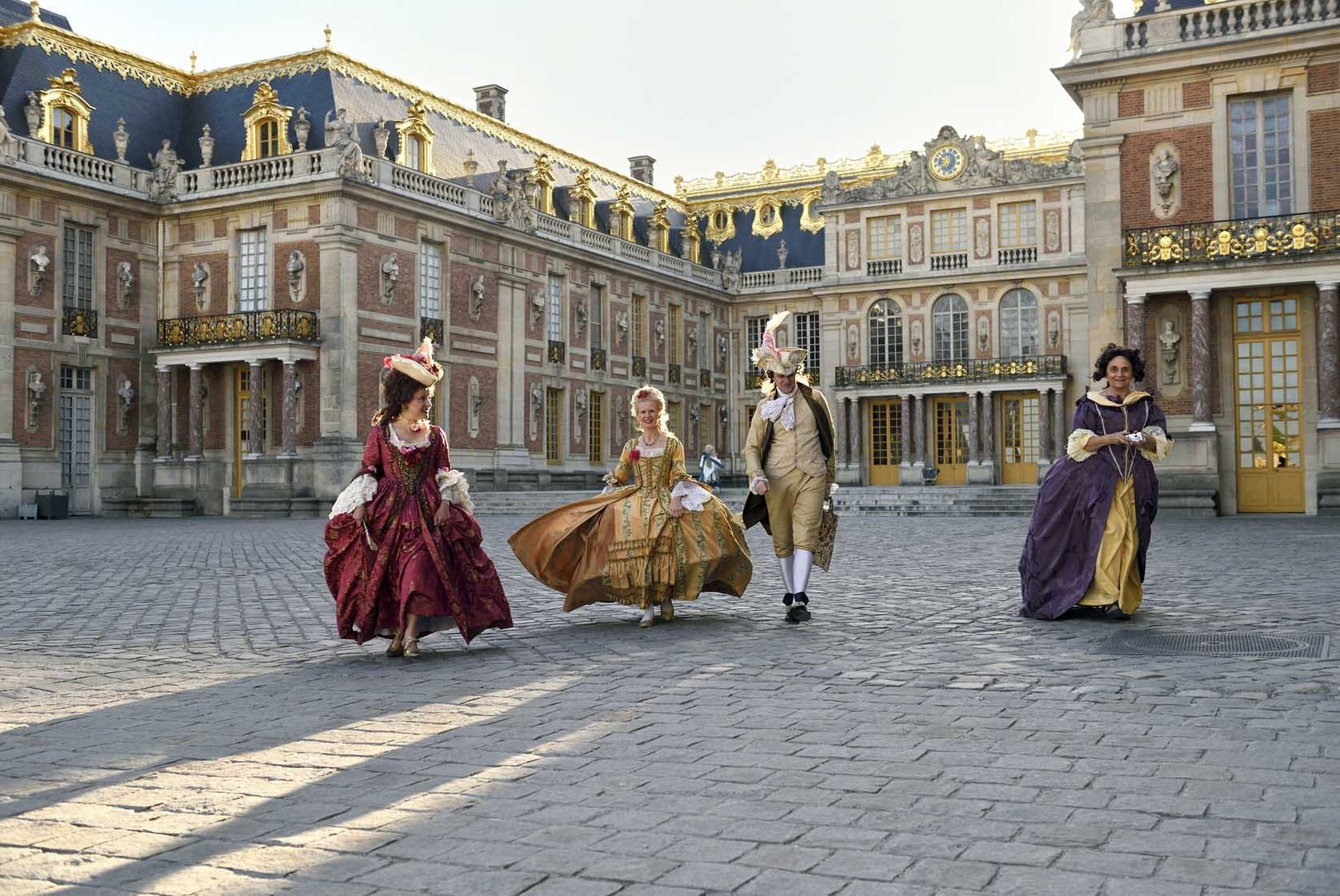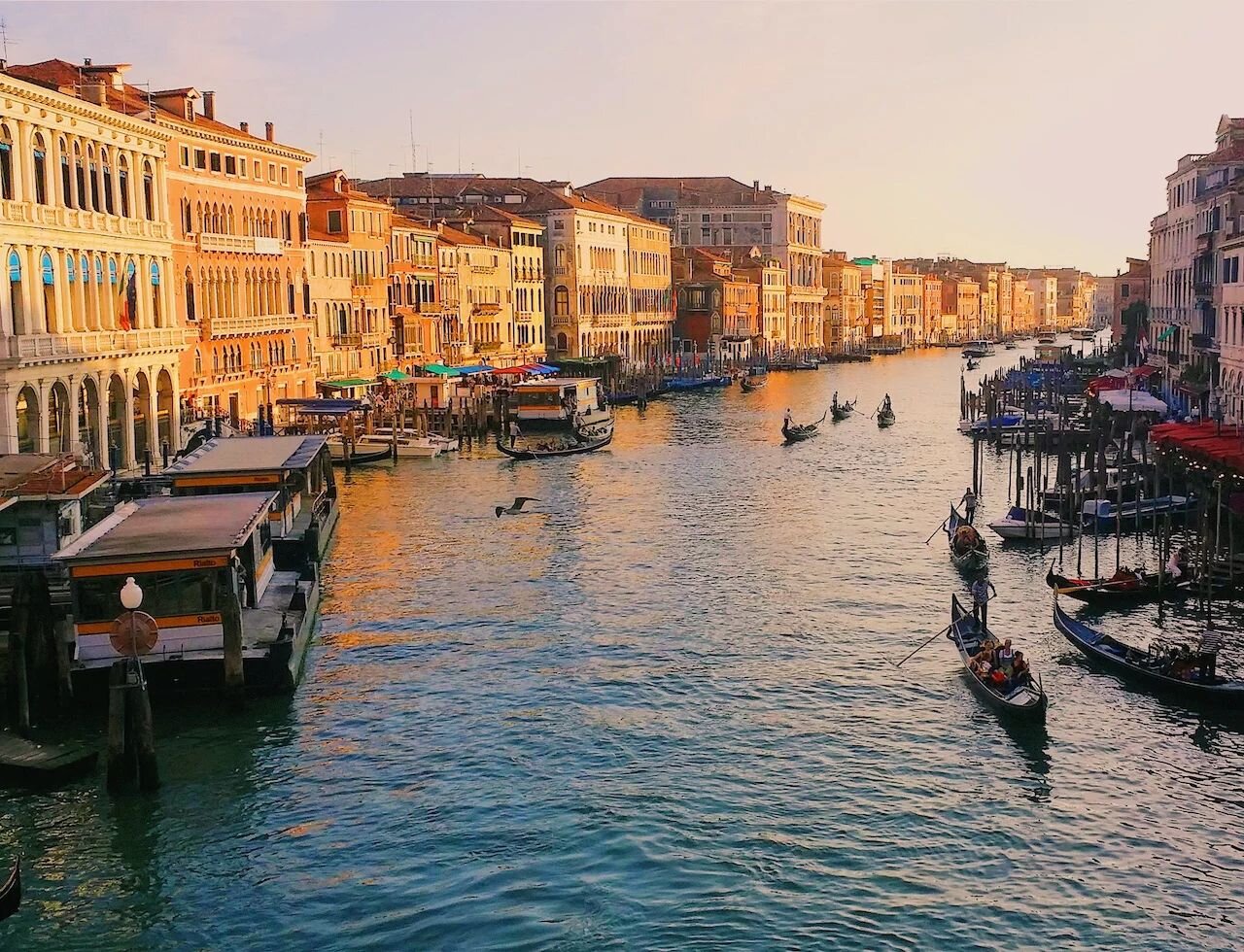Venetian Glassmakers in Paris
It is a well-known fact that Jean Baptiste Colbert, the finance minister of Louis XIV, the Sun King, was a man of measure. He was the one who set the rules and regulations for the import and export of luxury items into and out of France and the first to come to the realization that, in order to best serve the King’s passion for ostentatious luxury that was quickly emptying the public treasury, this luxury must no longer be imported, but created in-house.
Le Grand Trianon, Palace of Versailles, France.
Louis XIV had an especial passion for mirrors from the time that he was small, and hundreds of crates filled with them would leave Venice, not only to decorate the King’s palaces, but also the other aristocrats’ homes, as mirrors had just come into fashion as wall decoration. The Duchesse de Longueville, for example, had fifty Venetian mirrors hanging in her salon, the one next to the other, as if they were paintings. The King, himself, had an entire room of his mistress’, Louise de la Vallière, completely covered in mirrors. One hundred and forty-four of them! And each and every one ensconced in a priceless frame. And, so we can better understand their value, each Venetian mirror then cost as much as a painting by Van Gogh today.
The Grand Apartment, Palace of Versailles, France.
Those millions upon millions of francs leaving the public treasury and enriching the treasury of Venice were what led Colbert to send a letter to the French ambassador at the Serenissima to go to Murano and discreetly pick a team of glassworkers, tempting them to leave and go and establish themselves in Paris.
This was no easy feat.
In the 17th century, such an action was considered industrial espionage, and the Signoria had taken measures to protect its monopoly on its mirrors. The craftsmen of Murano knew that if they revealed their secrets, they would be severely punished. In the case of someone being tempted away by another country’s leader, the Council of Ten would ask him to return. If he refused to do so, his relatives would be thrown into prison and, if this brought no outcome, spies would be sent to where the craftsman had gone, and he would be murdered.
The Grand Canal, Venice, Italy.
Colbert knew all of this, but he was determined to take such a lucrative trade into his own hands. France had to make its own mirrors at all costs, and they had to be bigger and grander than those of Venice, of course. He was therefore left with no choice but to use the measure that everyone did in those days to achieve such an end: kidnapping.
An unbelievable adventure with spies and ambassadors, poison and threats ensued, and it lasted for two and a half years. The epicentre of this storm were the talented craftsmen of Murano, three of which initially went to Paris: maestro La Motta and his two apprentices.
Murano glassmakers today, Venice, Italy.
Everything I’m telling you can be found in the Venetian archives in a correspondence between Colbert and his ambassador, and the Doge with Alvise Sagredo in Paris, the Serenissima’s ambassador. When the Council of Ten became aware the craftsmen had gone missing, Sagredo was given the task of finding them, which he did, informing the Council where they had set up a workshop. He also reassured the Signoria that the mirrors being produced were horrid and miserable, and reflected a black light.
While Venice spent its time trying to convince its craftsmen to return, Colbert was initiating a second kidnapping. This time, four glassworkers would be leaving, and they left in a hurry, fully aware that the Signoria suspected such a move. When they arrived at Ferrara, they were put in a carriage and sent on to Paris. The new arrivals reassured the Minister that they would make bigger and better mirrors than their predecessors – exactly what Colbert wanted to hear.
The Saint-Antoine street today in the Marais district, Paris, France - photo attributed to Jean Robert Thibault.
At the end of that same year, the Royal Mirror Works (Manufacture de Glaces et de Mirroirs, 1665) were founded in a building located on the Faubourg Saint-Antoine, the area where all the various workshops producing furniture and furnishings were located. The factory operates even to the present time and goes by the name of Saint-Gobain, named after a castle located just outside of Paris, where some of its production was relocated. It is one of the few left in Europe, perhaps the last that has never stopped its production, even though today this has changed to include more modern items like fiber optics cable. It still produces mirrors though, and these now are so enormous that they can cover whole walls and ceilings. The Pyramide of the Louvre, for example, are covered in glass from Saint-Gobain.
The Louvre Pyramid, Paris, France.
How this adventure, filled with espionage and kidnappings finally ended is a story in itself, and full of secret incentives and not-so-secret threats. Paris, on the one hand, wanting to keep its newly-acquired glassworkers, Venice, on the other, wanting them returned. Colbert retained his tactic of generosity, which lined not only the pockets of the glassworkers, but also their egos. They received a salary of 1,200 livres, this at a time when Molière got 1,000 and Racine received 600, and the King, himself, would often go and visit them at their kilns and charm them with his questions.
In this way, it became fashionable for the ladies of the court to visit the glassworkers after having listened to the King explain the procedure of glass-making. The kilns became the Parisian attraction, which made Colbert a little uneasy, so he set about realizing the next part of his plan: kidnapping the glassworkers’ wives and bringing them over.
The Council of the Ten, Venice, Italy.
The Signoria was expecting this and had sent spies over to Murano to investigate the situation. The wives appeared genuinely surprised, saying it had never crossed their minds to leave their home, and then they vanished that same night. They sailed to Ferrara and then continued their journey by coach until Paris. Colbert wanted to entice an unmarried worker to come over and offered him a dowry of 75,000 livres (approximately 350,000 euro today) so that he might marry a Parisian – the same amount the bourgeois gave as dowry to their daughters.
The Palace of Versailles, France.
In opposition to the tactics of the French, the Signoria used a much more devious and subtle method – trying to break up the unity of the workers by creating envy and jealousy. It assigned its ambassador the duty of finding out if the glassworkers were all being paid equally, and when he discovered that the firstly-arrived La Motta was not sharing the King’s generosity at an equal rate to the subsequent arrivals, he started whispering in La Motta’s ear, especially against chief glassworker Rivetta. Eventually, he convinced La Motta that the only way to get his revenge was to kill his co-worker.
One night, La Motta, who did not exactly have a clean criminal record, armed himself and, along with his apprentices, entered Rivetta’s workshop. Rivetta grabbed a rifle and a gun-fight that resembled the Far West quickly ensued. There were broken mirrors everywhere. La Motta got off lightly with only a bullet wound to the shoulder, as did his apprentices, and the uproar ended quite suddenly when an escort of the King’s Guard happened to pass outside, on their way back to their barracks at Vincennes. The Guard entered the premises and stopped the brawl.
In the end, the Council of Ten, not having managed to achieve its ends, went and got out its big gun: poison. In 1667, the most talented of the mirror polishers died in an agony of stomach pains he had been suffering from for several days. The report of the ambassador to the Signoria was very modest: “It is not known whether he died naturally or not.” Three weeks later, the top glass-blower also died in agony. This time, Colbert demanded an autopsy which, to the ambassador’s great relief, indicated no foul play. “The deaths occurred naturally,” was his report to Venice.
The Grand Canal, Venice, Italy.
But the glassworkers had received the message intended and come to the realization that their choice of occupation was a little more dangerous than they had at first anticipated. They sent a letter to the Signoria asking for forgiveness and to send them money so that they might return to Murano. They got everything they asked for, and even more: the permission to set up their own workshops.
The Hall of Mirrors (La Galerie des Glaces) in Versailles, France.
Colbert allowed them to leave. France now knew their secrets and, fifteen years later, the Sun King inaugurated the Hall of Mirrors (Galerie des Glaces) in Versailles.
Discover the secrets of Venice in the book: My Venice










